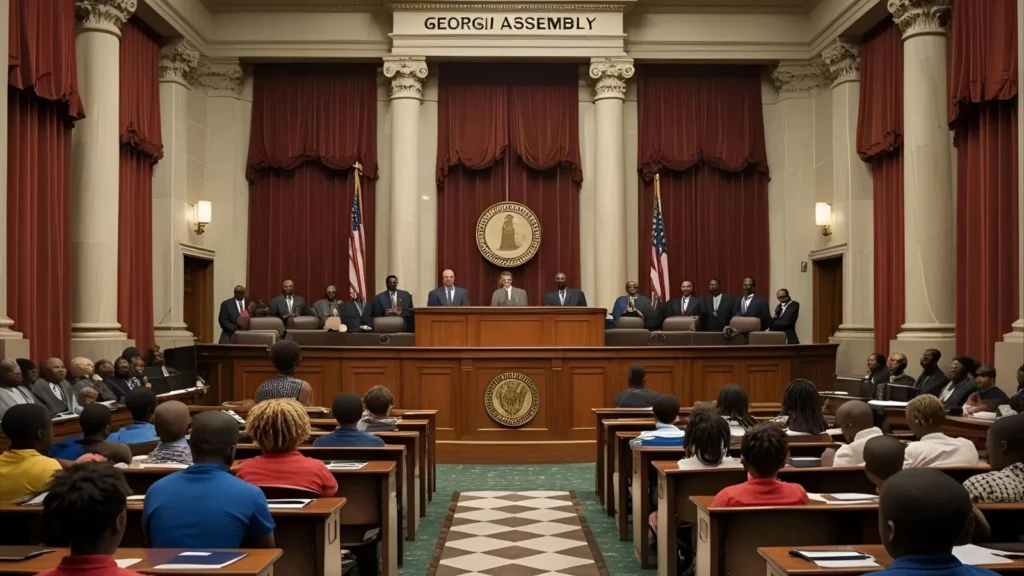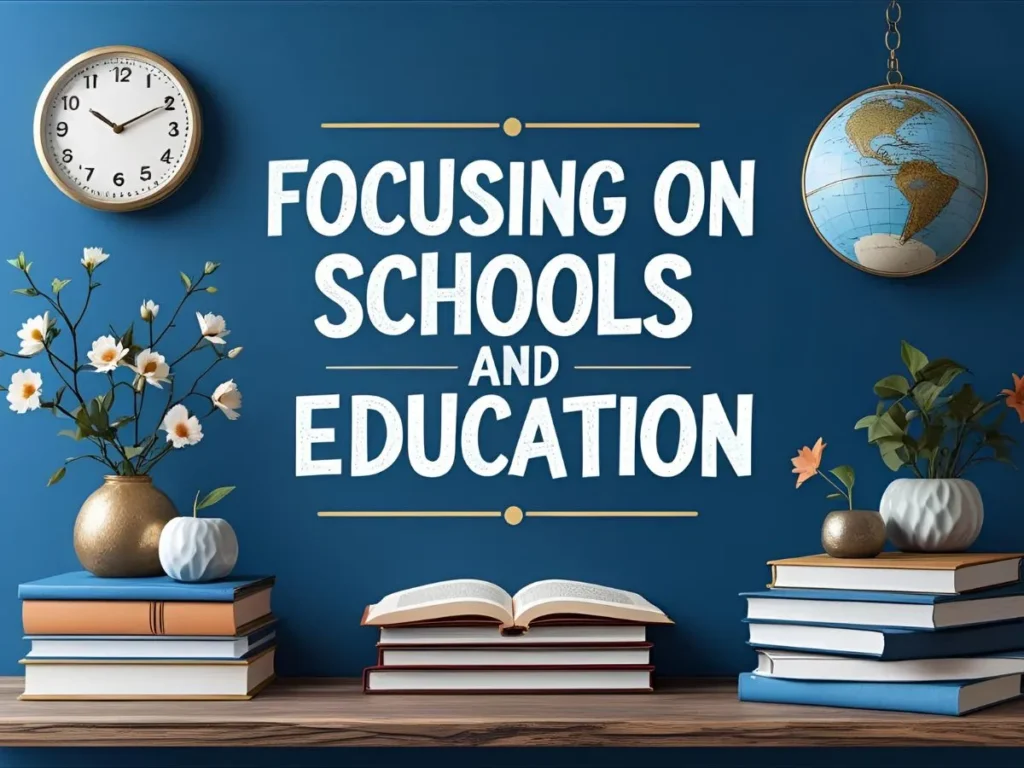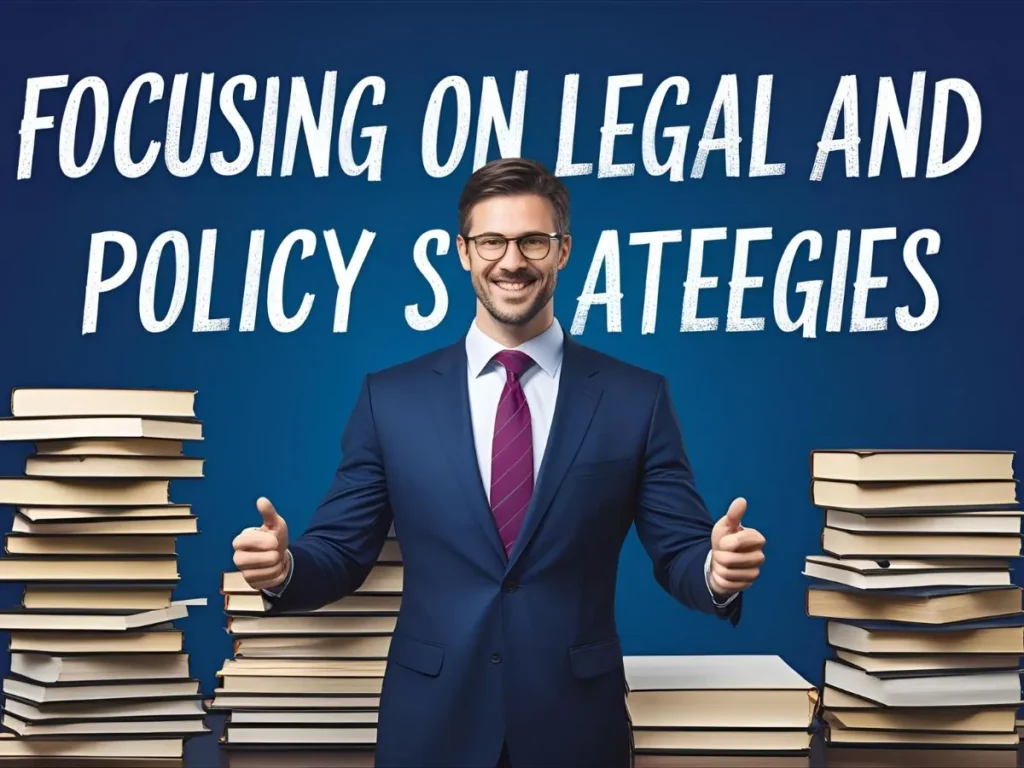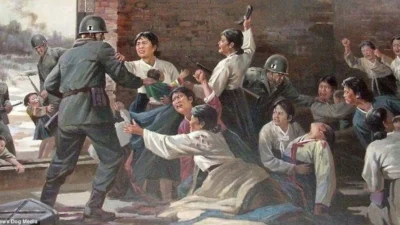The Supreme Court’s landmark ruling in Brown v. Board of Education (1954) declared racial segregation in public schools unconstitutional.
This shook the foundations of the segregated South. One place where resistance was especially strong was Georgia.
But instead of simply saying how did the Georgia Assembly respond?, there are many ways to phrase or explore that idea.
Whether you’re a student, writer, or just curious, here are 220 different ways to express this key historical question — clear, simple, and versatile.
Other Ways to Ask About Georgia’s Reaction to Brown v. Board of Education
- What did Georgia lawmakers do after the Brown decision?
- How did Georgia’s General Assembly take the Supreme Court ruling?
- What was Georgia’s legislative response to school desegregation?
- How did Georgia’s government respond to Brown v. Board?
- What changes did Georgia make after the ruling?
- How did Georgia resist the integration order?
- What did the state of Georgia do after the court decision?
- What steps did Georgia take after Brown?
- How did Georgia respond to desegregation in schools?
- What was Georgia’s reaction to the ruling on school segregation?
- What actions were taken by Georgia’s Assembly post-Brown ruling?
- How did Georgia’s legislators deal with the Supreme Court decision?
- What did Georgia officials say about the 1954 ruling?
- What measures did Georgia adopt after Brown v. Board?
- What was Georgia’s political answer to the court’s school ruling?
- How did lawmakers in Georgia handle the court decision?
- What strategy did Georgia use to address desegregation?
- What moves did Georgia make to oppose Brown v. Board?
- How did Georgia react to forced school integration?
- How did the state of Georgia respond to federal desegregation?
Phrasing the Reaction with Emphasis on Resistance

- How did Georgia push back against the court’s order?
- What efforts did Georgia make to block integration?
- What did Georgia do to resist school desegregation?
- How did the Georgia Assembly fight against the ruling?
- What tactics did Georgia use to delay integration?
- How did Georgia stand against Brown v. Board?
- What defiant steps did Georgia take post-ruling?
- How did Georgia lawmakers show opposition to Brown?
- What did the Georgia Assembly refuse to accept?
- What laws did Georgia pass to avoid integration?
- How did Georgia maintain segregation in schools?
- What resistance came from Georgia’s legislature?
- How did Georgia legally delay school integration?
- What was Georgia’s defiance toward the Supreme Court?
- What forms of protest came from Georgia’s leaders?
- What opposition did Georgia show to desegregation?
- How did Georgia react negatively to the decision?
- What methods did Georgia use to oppose the federal ruling?
- How did Georgia try to overturn the Brown decision?
- What anti-integration actions did Georgia lawmakers take?
Framing It Historically
- What was Georgia’s historical response to Brown v. Board?
- How did Georgia react in the 1950s to school desegregation?
- What happened in Georgia after the 1954 ruling?
- What was Georgia’s policy in the civil rights era?
- What was the political climate in Georgia post-Brown?
- How did 1950s Georgia deal with federal rulings?
- What did Georgia do during the school integration movement?
- How did Georgia behave in the era of civil rights change?
- What did 20th-century Georgia do after the court ruling?
- How did Georgia shape its laws in the 1950s?
- What history surrounds Georgia’s school policies post-Brown?
- What moves were made by Georgia in the civil rights context?
- What timeline shows Georgia’s response to Brown v. Board?
- How did Georgia’s legislature evolve after the decision?
- What happened in Georgia during the desegregation decade?
- What can we learn from Georgia’s 1954 reaction?
- How did Georgia’s 1950s politics address integration?
- How did the ruling affect Georgia’s school system?
- What legal battles followed the Brown decision in Georgia?
- What was Georgia’s role in resisting civil rights progress?
Focusing on Schools and Education

- How did Georgia change its school system after Brown?
- What school laws did Georgia pass post-Brown?
- What happened in Georgia’s public schools after the decision?
- What shifts occurred in Georgia education after the ruling?
- What did Georgia schools do after being ordered to integrate?
- How did Georgia educators react to the Supreme Court?
- How were Georgia’s schools affected by desegregation laws?
- What education reforms did Georgia push after the ruling?
- What was the response of Georgia school boards?
- What changes occurred in Georgia classrooms post-Brown?
- What was Georgia’s education policy after the Supreme Court decision?
- How did Georgia’s school structure adapt to federal pressure?
- What school-level pushback occurred in Georgia?
- How did public schooling in Georgia shift post-ruling?
- What education-based laws emerged in Georgia after Brown?
- What did the education department in Georgia do post-Brown?
- How were Georgia’s rural and urban schools affected?
- What was the local school response across Georgia counties?
- What efforts were made to keep schools segregated in Georgia?
- What plans did Georgia use to control school admission?
Exploring Political Language and Framing
- What political language did Georgia use to frame its response?
- How did Georgia frame the ruling in legislative discussions?
- What arguments did Georgia politicians use after the ruling?
- How did Georgia present its opposition publicly?
- What phrases did Georgia leaders use about Brown v. Board?
- What public messages came from Georgia’s government?
- How did Georgia justify its actions after the ruling?
- What political narrative emerged in Georgia after 1954?
- How did Georgia try to preserve state rights after Brown?
- How did Georgia use states’ rights as a shield?
- What official statements came from Georgia lawmakers?
- How was Georgia’s resistance worded in bills and policies?
- What tone did Georgia adopt about federal rulings?
- How did Georgia media report the Assembly’s decisions?
- What slogans or phrases were used in opposition?
- What political tools did Georgia use to support segregation?
- What role did state leaders play in shaping public opinion?
- How did political speeches reflect Georgia’s resistance?
- What messages were given to Georgia citizens?
- How did Georgia frame its legislation around “choice” or “freedom”?

Focusing on Legal and Policy Strategies
- What legal loopholes did Georgia use post-Brown?
- How did Georgia alter laws to avoid integration?
- What bills did Georgia pass to counter desegregation?
- What legal arguments did Georgia present?
- What new education policies emerged after the ruling?
- How did Georgia try to maintain segregation legally?
- What constitutional changes did Georgia pursue?
- What state-level legal tricks were used?
- What policy tools were created by Georgia lawmakers?
- What regulations were introduced in Georgia schools?
- What defense did Georgia make against integration orders?
- How did Georgia navigate legal compliance with resistance?
- What role did private school funding play in Georgia?
- What amendments did Georgia introduce in response?
- What “freedom of choice” laws were passed?
- How did voucher programs play a role in Georgia’s plan?
- What district-level legal actions were taken?
- What court challenges happened inside Georgia?
- What local ordinances protected segregation in Georgia?
- What role did school boards play in legal evasion?
Asking with a Focus on Social Impact
- What was the impact on Georgia students after Brown?
- How did Georgia families react to legislative changes?
- How were communities in Georgia affected?
- How did Black communities respond to Georgia’s decision?
- What fear or hope followed the Assembly’s response?
- What civil rights groups responded to Georgia’s moves?
- How did Georgia’s choices affect public unity?
- What tensions grew after Georgia’s resistance?
- How did the state’s action affect public perception?
- What happened to students caught in the middle?
- What challenges did Georgia teachers face?
- How did segregation persist in Georgia’s towns?
- How did citizens organize in reaction to policies?
- What stories emerged from students in Georgia?
- How did the NAACP respond to Georgia?
- What protests followed the Assembly’s actions?
- How did the state divide after the ruling?
- What was the emotional toll in Georgia communities?
- What was the youth reaction to Georgia’s policy?
- What future movements grew out of Georgia’s stance?
Conclusion:
Understanding Georgia’s reaction to the Brown ruling is key to grasping civil rights history.
These 220 ways help you ask, analyze, and explore the issue in fresh, simple terms.



